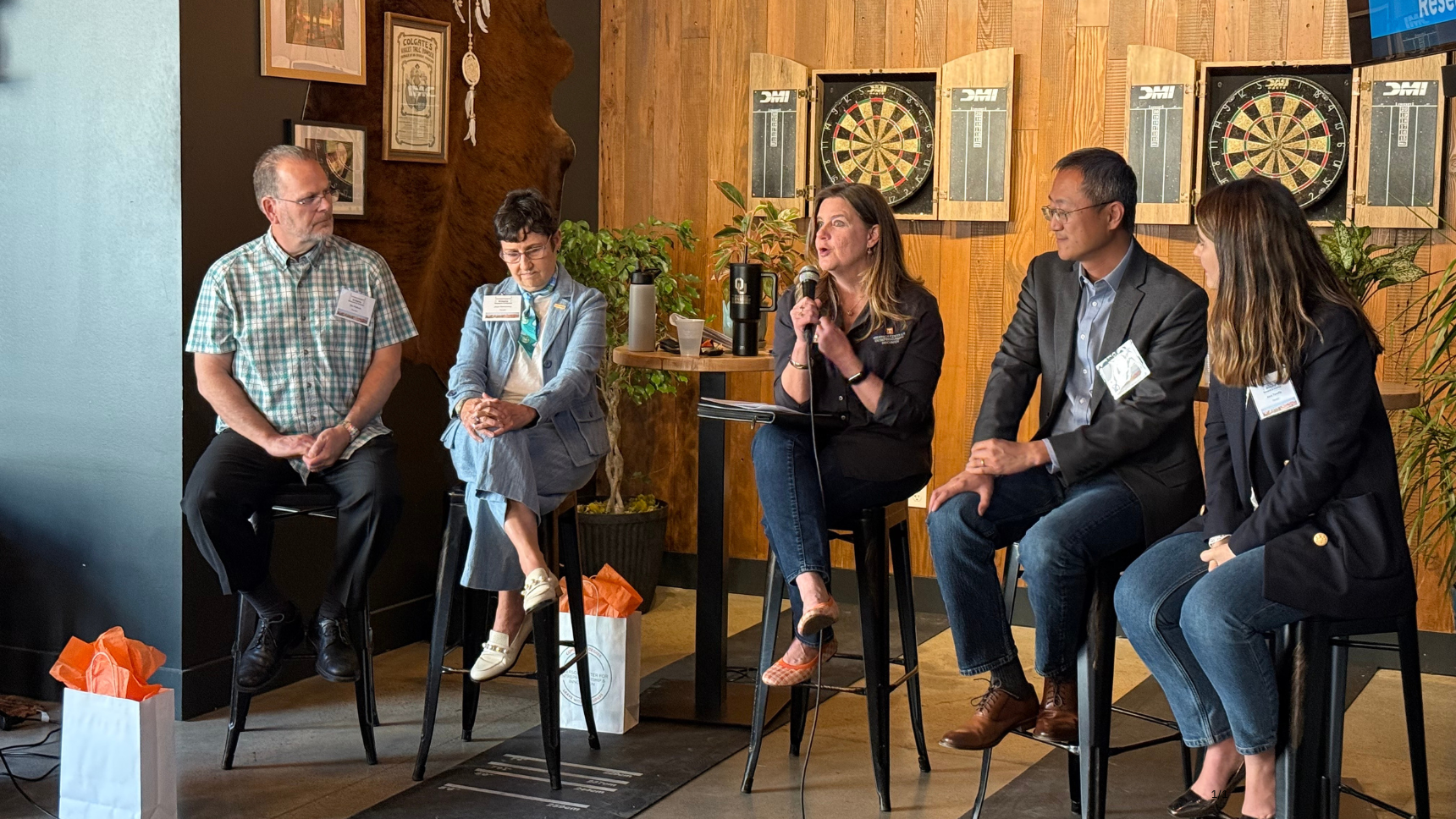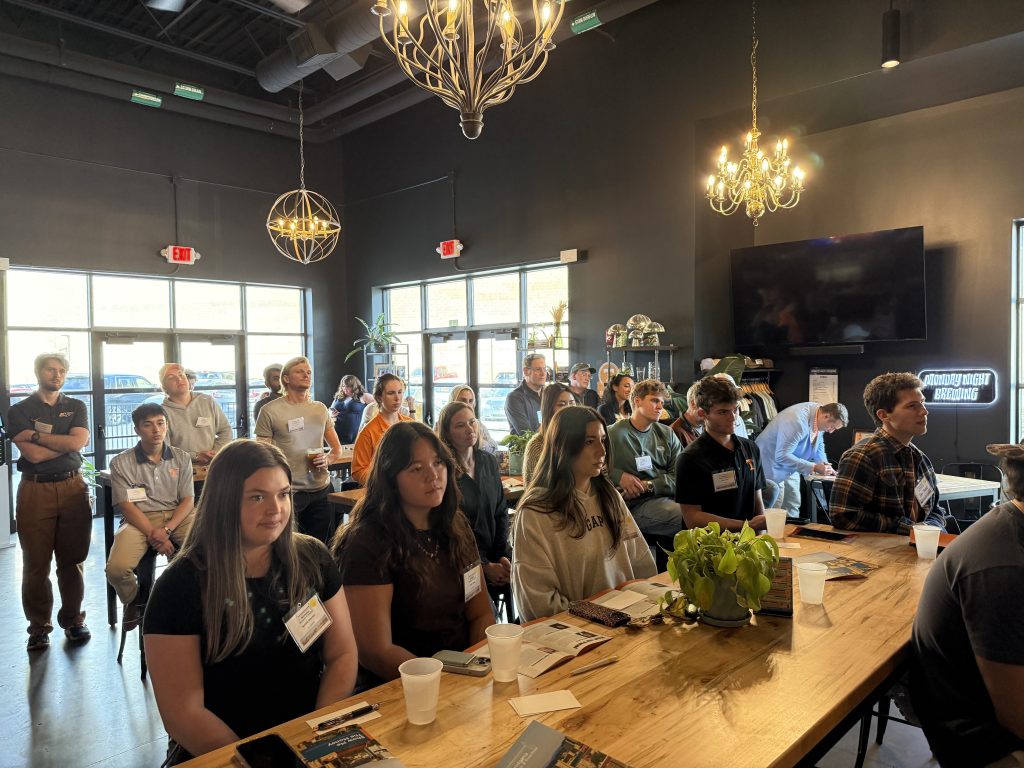
‘There’s no such thing as free money’ | Anderson Center bridges research and practice
The Anderson Center for Entrepreneurship and Innovation hosted the event at Kerns Food Hall in South Knoxville.
The Anderson Center’s “Bridging Research and Practice” series is where professionals and researchers from diverse industries unite to forge meaningful connections, share experiences and strengthen their networks. The “Show Me the Money” event focused on different sources of startup funding for emerging and growing ventures.
Securing resources, particularly funding, is crucial for launching and growing a start-up. However, the variety of sources and the challenges involved in accessing them can often feel overwhelming to new founders. To help navigate this, the Anderson Center brought together four expert panelists who are uniquely qualified to share their insights and help guide student founders through the complexities of securing resources by sharing experiences and research.
The panel speakers included Anca Timofte, Jian Huang, Joan Heminway and Tim Pollock.
Timofte is the co-founder of Holocene, a Carbon Dioxide Removal (CDR) company based in Knoxxville, Huang is a multi-time founder – both of Survature/Mapprio, and more recently VisualizAI, Heminway is a Professor of Business Law at UT, Knoxville, and Pollock is the Haslam Chair in Business and Distinguished Professor of Entrepreneurship.
Huang approached the panel from a university-based view. He has strategically navigated commercializing university innovations for decades, which involves raising money for research, applying for grants, and then raising money from outside investors.
Timofte more exclusively found funding through grants, investors, and customer constructs. To date, Holocene has raised a little more than $8 million.
“The investor landscape is incredibly diverse, they all have different motivators. Some have a mission, some have a money goal,” Huang said, urging students to fully understand investor motivations before signing on a dotted line.
Timofte suggested the best place to start is pitch applications and grant opportunities. “Not everyone has a family member who can lend them $10K,” she said. “Getting acclimated in the communities where your product is relevant, and entering every pitch you can is important in the beginning.”
However, once opportunities shift from gifts and grants to private investment, the game changes. Investors take equity, influence business decisions, and apply pressure in various places. Timofte said it’s understandable – they’re eager to get a return on their investment.
“There is no such thing as free money, there are always strings attached,” Timofte said.
Pollock jumped in to warn students that venture capital (VC) is rarely the first place to turn when trying to bring a business to market. Often, with borrowing their money, also comes borrowing the VC’s reputation. Most investors don’t take that responsibility lightly.
“Once you start taking other people’s money, they have a say in what you do with it. So put it off as long as you can,” he suggested.

Melissa Cardon, the moderator of the panel wrapped up the insightful discussion with a bit of advice for new and emerging entrepreneurs.
“Be careful of the advice you see on the internet. There’s no hack around this stuff – it’s hard. TikTok influencers likely aren’t revealing the whole story,” she said. “The best way to get advice is from other entrepreneurs in your local area.”
Learn more about the Anderson Center.
Like what you've read?
Forward to a friend!

